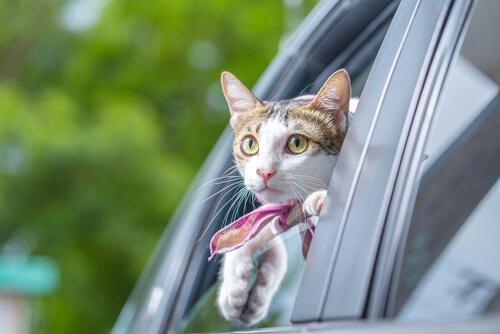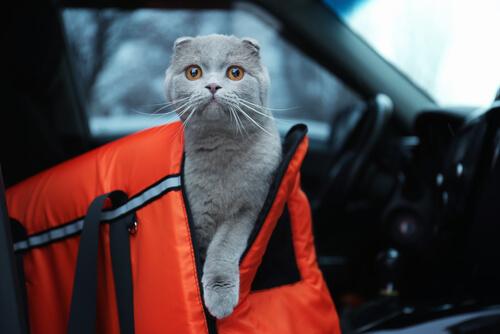How To Get Your Cat Used To Riding In A Car


Written and verified by the lawyer Francisco María García
It takes patience, training, and practice to get your cat used riding in a car. Unlike dogs, cats need to be in stable environments. Cars are far from that, but all the vibrations, noises, and sudden movements are tough on for them to handle.
Still, there are things you can do to get your cat used to riding in a car. That way, if you have to take them to the vet, or just can’t leave them by themselves, they will already be ready and won’t cause you any headaches.
Some cats even end up being able to handle long trips, which means they can come along with you on vacation. Today you can read about some tips on training your cat to used to riding in a car.
Have it get familiar with the car
You can follow the same basic rules as you would with water. Slowly Introduce this change to them and create some conditions that can help your cat adapt. So, the first step is to put your cat in the car without turning it on.
You can do this two or three times as a test. Putting them inside without the turning on the engine will help them feel more comfortable. However, you should remember that you need to be with your cat during every step of the way.
You should also put them in a travel carrier any time you have it inside a vehicle. The other option is to use a leash and muzzle, which also takes some training. As everyone knows, cats are very sensitive to unnatural contact and environments.

How to get your cat used to the car: stage II
After some training sessions when your car isn’t running, it’s time to bring in some things that could bother your cat. We’re talking about the sound of the engine running and moving driving around. Both of them factors could cause your cat to feel anxious or even afraid.
Start by turning on the engine without going anywhere. Make sure you have your cat close by and under control so they feel like you’re there with it. A cat’s reactions will vary depending on how loud the sound engine runs. You can also do this one two or three times before your first drive.
After you’ve done these tests, then you can start to drive around. Only go short distances and never go too fast. Keep the windows closed so your cat doesn’t try to get out.
Positive reinforcement: rewards
Once you’ve started with the hardest part (the trip itself), you should reward your cat for their good behavior. So, once the journey is over, give them some kind of reward. That way they will associate driving as a positive experience.
There are basically two good kinds of rewards for cats. One is to give them a toy, the other is to give them a treat. The issue with treats is that you’ll need to wait until after the trip is over to prevent your cat from getting carsick.
If they do get carsick or have digestive problems, giving them a toy is the best way to use positive reinforcement. At first, they will go with you on the trips just for the reward, but later on, they should feel comfortable about being inside a moving vehicle.

Tips for traveling with your cat
After you get your cat used to the car, there are still some safety measures you should consider. Here are a few things that absolutely need to be part of their routine:
- No food before the trip. It’s best to feed your cat two or more hours before the trip. It’s the same with long trips — you can only feed them during long rest.
- Always use a carrier. Even once your cat has gotten used to the car, you should still use a carrier. Make sure to close the gate, because if you brake suddenly or get into an accident, it could flip over and it might be worse if your cat falls out.
- Interact with them as often as you can. If the carrier is big enough, put them in a blanket and maybe even give your givea toy. Pet your cat and interact with him at every stoplight.
This text is provided for informational purposes only and does not replace consultation with a professional. If in doubt, consult your specialist.